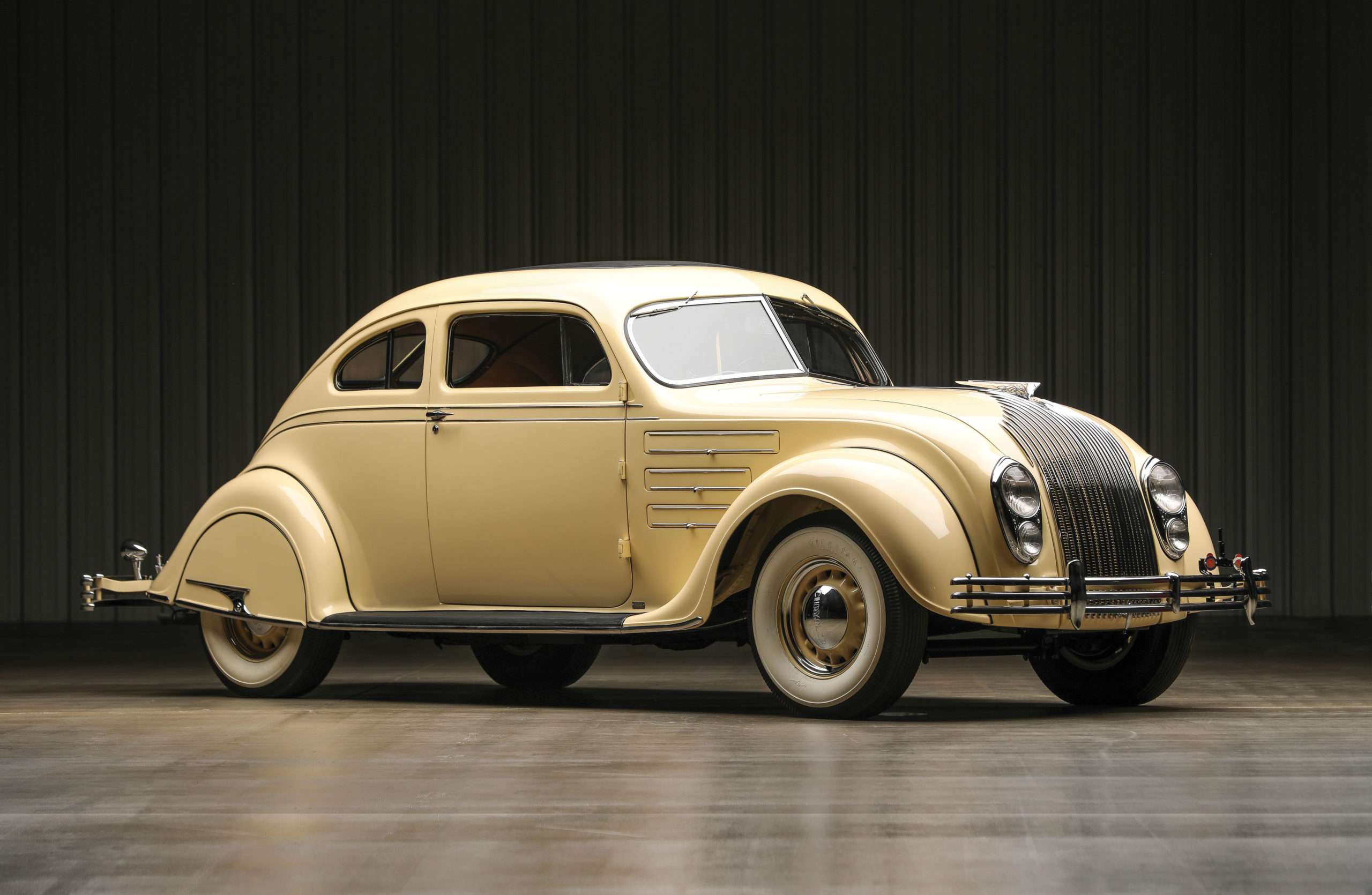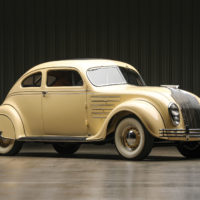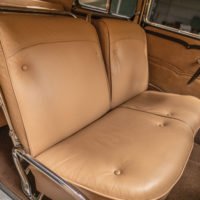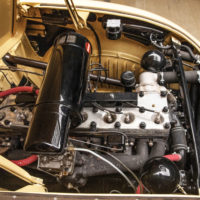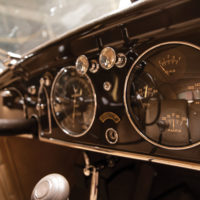SCM Analysis
Detailing
| Vehicle: | 1934 Chrysler Airflow Coupe |
| Years Produced: | 1934–37 |
| Number Produced: | 29,500 |
| Tune Up Cost: | $400 |
| Chassis Number Location: | Left-hand A-pillar |
| Engine Number Location: | Engine block above water pump |
| Club Info: | Airflow Club of America |
| Website: | http://www.airflowclub.com |
| Alternatives: | 1930–35 Buick Series 50, 1932–38 Oldsmobile L-Series, 1934–40 Studebaker President |
This car, Lot 629, sold for $173,600, including buyer’s premium, at Worldwide Auctioneers’ Auburn, IN, auction on September 3, 2022.
Walter Percy Chrysler’s 1937 autobiography, Life of an American Workman, published shortly before his death in 1940, conspicuously omits any mention of one his firm’s most important achievements: the 1934 Airflow. It seems at once telling and surprising given the contrast between the Airflow’s abbreviated shelf life and the significant advance in automotive innovation it represented. For all its considerable technical prowess, the Airflow was quickly besmirched by a poor launch. Jay Leno, in describing his rare 1934 Airflow Imperial sedan, said it just couldn’t be sold “before its time.”
“Fashioned by function”
Perhaps it didn’t have to turn out that way. Nearly 90 years after its dramatic unveiling at the January 1934 New York Auto Show, the Airflow remains a complex milestone in American automotive history. It was the product of an intense period of research and development by Chrysler’s skilled product development team of Fred Zeder, Owen Skelton and Carl Breer (known as the “Three Musketeers” or “ZSB”).
The Airflow’s genesis was Breer’s 1927 observation of a fleet of military aircraft en route to Detroit’s Selfridge Field. That epiphany led the team to seriously study the influence of aerodynamics on automobile design, with the help of no less an authority than Orville Wright. After investigating dozens of shapes, Chrysler settled on a basic proportion that would provide meaningful aerodynamic improvements without constraining interior spaciousness.
But there was more to the Airflow than its reduced wind resistance. Interior packaging and ride comfort were improved by moving the engine over the front axle, allowing the rear seats to be pulled forward of the rear axle. These features made the Airflow remarkably safe while improving its handling by lowering its center of gravity. Together, the talented ZSB trio convinced their senior leader that they were on to something big that would blow a hole in the side of a hidebound industry.
Hedged bets
In January 1934, guided by intuition rather than consumer research, Chrysler launched the Airflow to the public. The concept had originally been targeted at just the lower-cost DeSoto marque, but Chrysler was so enamored with the car that he ordered it spread to the Chrysler and even Imperial lines. Fortunately, cautious (or prescient) planners, who may have been unconvinced that the Airflow was the future writ large, backed it up in 1935 with a more-conventional family of coupes, sedans and convertibles sold under the “Airstream” line.
That turned out to be a fortuitous decision, as the Airflow immediately faced serious headwinds. While all automakers had to deal with the Depression’s effects, Airflows were comparatively expensive. The entry-level CU series coupe was priced at $1,345 when a perfectly respectable (though admittedly less exotic) Buick Series 50 was only $1,110.
A further impediment was the Airflow’s manufacturing process. The structural innovations that the Chrysler team was so proud of delayed its launch and spawned persistent rumors — abetted by competitors — that early Airflows were beset with quality problems. “The workmen just didn’t know how to build the cars properly,” said Fred Breer, Carl’s son, “and by that time the public — and the dealers particularly — had become disillusioned with the Airflow.”
Sadly, no amount of free promotional footage sent to local cinemas extolling the Airflow’s advances made a difference. Buyers moved on, with Oldsmobile perhaps the biggest beneficiary of Chrysler’s missteps.
Yesterday’s tomorrows
Pegging the Airflow in the pre-war automotive hierarchy is challenging. Rare and idiosyncratic, its machine-age styling and intricate details nonetheless appeal to a modern nostalgia. With approximately 30,000 Chrysler versions built, the few that remain don’t often come up for sale, and the market rewards those that have been well restored and AACA sanctioned.
The Audrain Museum’s highly decorated 1935 Imperial coupe is one of few remaining examples of the 200 built that year. “The rarity of the 2-door versions, and the fact that so few are in good condition, can easily drive prices to $100,000, or even $150,000 now,” says David de Muzio, Audrain’s executive director and curator of collections.
Our subject car previously sold at Worldwide’s 2020 Auburn sale for $209,500 (SCM# 6937738). That it suffered a $36k price reduction when it reappeared two years later can likely be written off to a different group of bidders and a wavering demand for pre-war cars, even unique ones. It still represents a benchmark for Airflows, with other standout examples selling at or near $100,000.
The Airflow may not have rated a mention in Chrysler’s biography, but he staunchly defended it in 1935: “The Airflow design in less than a year has created an entirely new conception of what the car of the future will be. There is no longer any question as to the popularity of this design.”
Sometimes the future takes time. ♦
(Introductory description courtesy of Worldwide Auctioneers.)
